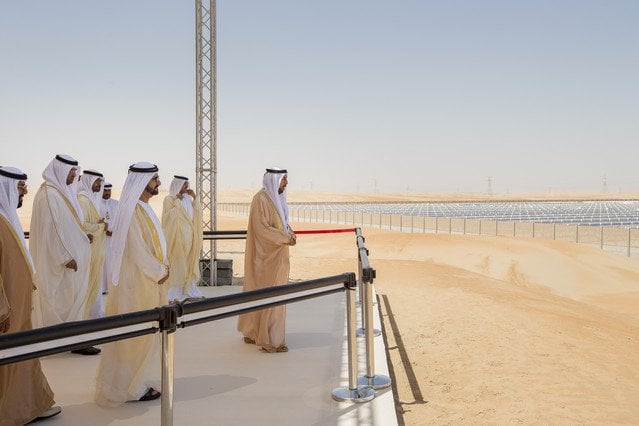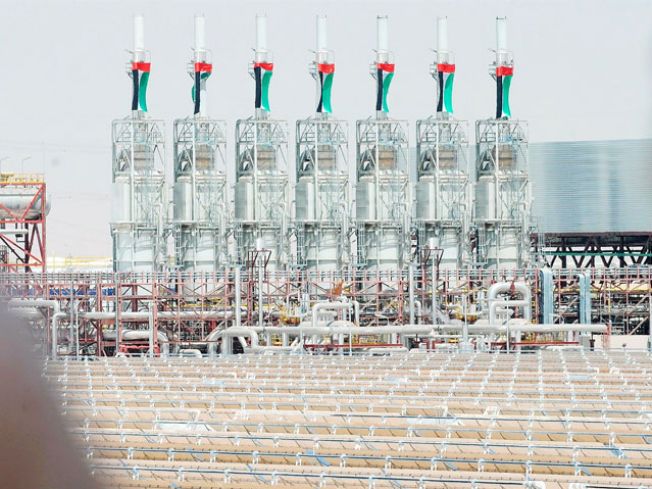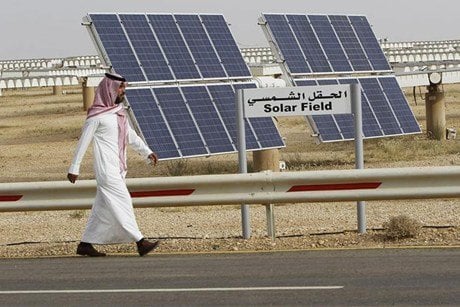Mehmood Ul Hassan Khan
United Arab Emirates policy of diversification of energy mix is now paying its dividends. Most recently, His Highness Sheikh Khalifa bin Zayed Al Nahyan President of the United Arab Emirates officially inaugurated Shams 1, the largest concentrated solar power plant (CSP) in operation in the world. It is located in the Western Region of Abu Dhabi, the 100-megawatt, grid connected power plant will generate clean energy to power 20,000 homes in the UAE. It is indeed a great achievement in the field of renewable energy in the whole Gulf Cooperation Council and Middle East and North Africa region too. It is also an integral part of Abu Dhabi’s 2030 Vision, with its goals of diversifying the region’s energy mix and building a knowledge-based economy. It will extend the life of the UAE’s hydrocarbon resources and support our long-term energy and economic security.
His Highness President Sheikh Khalifa bin Zayed Al Nahyan expressed his pride in the inauguration of Shams 1, terming it a major achievement in the UAE’s goal of energy and economic diversification.
“Expanding our leadership into renewable sources of power demonstrates the United Arab Emirates’ commitment to maintaining its position as a major provider of energy,” said His Highness Sheikh Khalifa bin Zayed Al Nahyan. “The inauguration of Shams 1 is a major milestone in our country’s economic diversification and a step toward long-term energy security.
“Shams 1 is a strategic investment in our country’s economic, social and environmental prosperity,” added His Highness. “The domestic production of renewable energy extends the life of our country’s valuable hydrocarbon resources and supports the growth of a promising new industry he added.
The ceremony was also attended by His Highness Sheikh Mohammed bin Rashed Al Maktoum, Vice President and Prime Minister of the UAE and Ruler of Dubai; His Highness General Sheikh Mohammed bin Zayed Al Nahyan, Crown Prince of Abu Dhabi and Deputy Supreme Commander of the UAE Armed Forces, as well as other members of the UAE leadership.
Dr. Sultan Ahmed Al Jaber, CEO of Masdar labeled the inauguration of Shams 1 as a breakthrough for renewable energy development in the Middle East. “With the demand for energy rising exponentially, the region is undergoing a major transformation in how it generates electricity, he added. He explained that in fact, the Middle East is poised for major investments in renewables, and Shams 1 proves the economic and environmental advantage of deploying large-scale solar projects.” He was of the opinion that inauguration of Shams 1 would enhance the leading role of the UAE in the region and around the globe. It is of course paradigm shift in the energy mix i.e. from exports of hydrocarbons to environmental friendly renewables.
He said that investments in sophisticated projects like Shams 1train our future energy leaders, has already created specialized jobs and encourage economic development. Renewable energy is fundamental to achieving a diversified energy mix and extending the life of our precious hydrocarbon resources. Clean energy, is aligned with the legacy of conservation instilled in us by our founding father, Sheikh Zayed bin Sultan Al Nahyan.”
Dr Rashid Ahmed bin Fahd, Minister of Environment and Water stressed that the launch of Shams1 Plant, the largest concentrated solar power plant (CSP) in operation in the world, aimed to diversify sources of energy in the country. The launch of Shams 1 Plant represented an important era of the renewable energy in the UAE and fruit of concerted efforts exerted by Masdar notched the UAE on the world map of renewable energy in line with the UAE vision 2021, he added.
“It is an essential contribution to transforming our national economy to green economy with reduced carbon in accordance with the UAE Strategy for Green Economy declared by the UAE Vice President in 2011,” said the UAE minister.
Project’s Specifications
The Dh2.2 million or US$600m, plant covering 2.5 sq km in Madinat Zayed in the Western Region is the largest renewable energy project in the Middle East. It will generate 100 megawatts of clean and sustainable energy enough to power 20,000 homes, and the giant step so far towards Abu Dhabi’s goal of obtaining 7 per cent of its energy from renewable sources by 2020. It shows that UAE is the regional leader in the renewables mix. It is designed and developed by Shams Power Company, a joint venture between Masdar (60 percent), Total (20 percent) and Abengoa Solar (20 percent). Shams 1, Masdar’s renewable energy portfolio accounts for almost 68 percent of the Gulf’s renewable energy capacity and close to 10 percent of the world’s installed CSP capacity.
It has 258,048 parabolic trough mirrors, 192 solar collector assembly loops with eight solar collector assemblies per loop, 768 solar collector assembly units and 27, 648 absorber pipes. Eighty per cent of the Dh2.2billion of funding has come from 10 banks, including five European banks, three Japanese banks and National Bank of Abu Dhabi and Union National Bank locally.
Strategic Significance
From Qatar to Oman, Saudi Arabia, Jordan and Morocco, governments are turning to solar power as cheaper installation costs, higher oil prices and rising energy demand make it a far more attractive investment. The innovative Shams 1 reduces the UAE’s carbon emissions, displacing approximately 175,000 tonnes of CO₂ per year, an equivalent to planting 1.5 million trees, or taking 15,000 cars off the road. It is estimated that with solar power generated during peak demand, the UAE can reduce its need for “peak shaving” generators, which are expensive and idle most of the year. In addition to advancing long-term UAE energy diversification plans, Shams 1 demonstrates the rich solar potential of the whole region, where annual global radiation reaches 2000 kilowatt hours (kWh) per square metre.
Covering an area of 2.5 km² Shams 1 incorporates the latest in parabolic trough technology and features more than 258,000 mirrors. By concentrating heat from direct sunlight onto oil-filled pipes, Shams 1 produces steam, which drives a turbine and generates electricity. The project uses a booster heater to heat steam as it enters the turbine, dramatically boosting the cycle’s efficiency. Shams 1 also features a dry-cooling system that significantly reduces water consumption a critical advantage in the arid desert. It is hoped that when fully operational, the plant will displace carbon dioxide equivalent to planting 1.5 million trees, or taking about 15,000 cars off the road.
It has multiplier socio-economic and geo-strategic benefits. By increasing the penetration of renewables, UAE could reduce the amount of exposure to imported fuels, be it liquid hydrocarbons or gas.
The International Renewable Energy Agency (IRENA) welcomed the activation of the world’s largest operational Concentrating Solar Power (CSP) facility, as the Middle East turns to clean energy to fuel future growth. “The UAE’s investment in renewable energy offers the region a pragmatic path to reducing per capita carbon emissions, which are currently among the highest in the world,” said IRENA’s Director-General, Adnan Z. Amin.
Concluding Remarks
Shams1 is a remarkable achievement for the UAE. It is a giant step towards achieving the targets of 7 percent of renewable energy mix in the future. It is indeed a paradigm shift to its diversification of economy and energy. UAE has been blessed with abundant hydrocarbon fossils. But its growing population and hydrocarbon resources are gradually diminishing. Diversification is the answer and Shams I stands for it. Increasing domestic demand for power, for desalination and all the other needs of an emerging economy requires diversification of energy resources especially solar energy.
It is part of the 2030 Vision for Abu Dhabi, which seeks, as a first step, to generate 7 per cent of the city’s energy from renewable sources by 2020. But at the current output level, the capital would require 15 plants like Shams 1 to reach that target. The role of Masdar, the Mubadala-owned company are very important which owns a majority share in the Shams project, is looking at other solar-power projects, as well as wind power projects elsewhere in the world.


